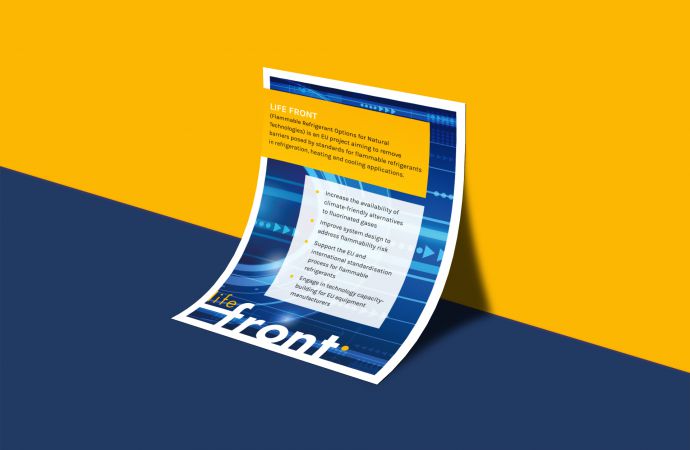The EU LIFE FRONT project’s new databases shed light on safe handling of hydrocarbons, helping to remove barriers to adoption.

The LIFE FRONT project was discussed at a MOP31 side event.
Safety standards for A3 (flammable) refrigerants in refrigeration, air conditioning and heat pump (RACHP) systems need to be adequately updated and improved to take into account technology innovation as well as new applications and data, said Dr. Daniel Colbourne, Engineer at German consulting firm HEAT GmbH and Lead Technical Expert of the LIFE FRONT project.
Colbourne made this observation on November 6 at the European Commission’s “Latest developments on refrigeration standards at international and European level” side event, held at the 31st Meeting of the Parties to the Montreal Protocol (MOP 31) in Rome. As part of this event, he shared some key results from LIFE FRONT during his “Evolution of safety standards for A3 refrigerants in RACHP systems” presentation.
The three-year LIFE FRONT project, launched in June 2017, aims to remove the barriers for flammable refrigerants such as propane (R290). It is funded by the LIFE Programme, the European Union’s funding instrument for the environment and climate action. shecco, publisher of this website, is coordinating the project and is in charge of communication.
In the LIFE FRONT databases, launched in October, flammable refrigerant risk parameters are shown and are based on the actual frequency of leaks, leak-hole sizes, and mass-flow rates seen in the marketplace. Both databases are considered input parameters for safety standards, determining, among other things, allowable refrigerant charge sizes and system design parameters.
“Correct determination of the hole size is essential for handling of flammable HC refrigerants,” said Colbourne during his presentation. “If it’s too small, you underestimate the potential hazard; too large and you over-engineer and over-price protective measures.”
The MOP 31 side event offered other presentation on key developments in the industry, including the approval this year of IEC 60335-2-89 for commercial refrigeration appliances, the ongoing revision of IEC standard 60335-2-40 in air conditioning, the Secretariat’s interactive online safety-standard tool, and the European Commission’s standardization request to develop technical specifications for the use of flammable refrigerants.
Correct determination of the hole size is essential for handling of flammable HC refrigerants.” - Dr. Daniel Colbourne, Heat GMBH
Get involved with LIFE FRONT
Equipment manufacturers are invited to contribute to the LIFE FRONT database (the refrigerant leakage-size database plus the concentration database) – Europe’s largest leakage-size database – with their own data, which will remain confidential and anonymous.
Related stories



